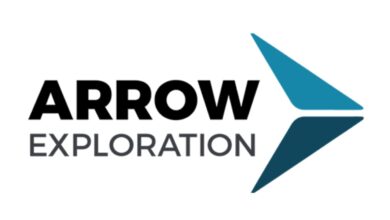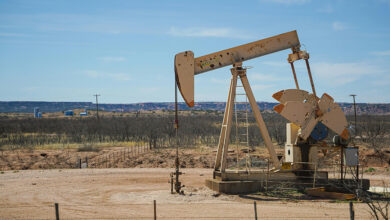Consolidation, shift away from dayrate model set to transform US onshore drilling industry
As drilling contractors continue to make efficiency gains and take on additional wellsite services, fewer rigs overall will be required to grow US production
By Kelli Ainsworth Robinson, Associate Editor
Byron Dunn is President and CEO of Independence Contract Drilling.
What are the most critical challenges US onshore drilling contractors are facing?
One of the biggest challenges the industry faces right now is the dayrate model. The issue is that the dramatic increases in drilling efficiency and wellbore quality made by drilling contractors are not reflected in the dayrate model. The benefit of those advances goes only to the shareholders of the E&P company, not to the shareholders of the drilling contractor.

That can’t go on, especially now as contractors are increasingly working to leverage the rig as an informational control mechanism to drive efficiency gains. The rig is the epicenter of information flow at the well site. All downhole information comes to the rig, and all information on directional drilling and drilling parameters comes to the rig. The rig is the pressure point in terms of information flows. Contractors need to receive more than dayrates in order to drive the performance gains that operators want.
How could the business model change to better reward contractors for efficiency gains?
For example, instead of operators asking for a rig for a year or two years at a certain dayrate, they might contract a rig for a 200-well package. The operator and contractor could agree on a base rate and performance metrics, with additional payments to the drilling contractor for achieving certain targets. So far, we haven’t entered any of these types of agreements, but conversations around the business model are definitely starting to change.
Aside from rewarding drilling contractors for efficiency improvements, what other changes might such a new business model bring to the drilling industry?
It’s going to result in consolidation as drilling contractors take on new capabilities, like reservoir characterization, that they don’t currently have, either through consolidation or acquisition. The nature of the industry will change enormously. The rig count necessary to maintain and grow the US production base will shrink dramatically, as well, because the rigs will be so much more efficient. There will be fewer rigs, but the rigs that remain are going to drill more footage and more wells.
Another factor will be pad drilling. Every time you put a pad-optimal rig in the field, you obviate the need for four or five lower-tech rigs. For the past several years, operators have been moving conclusively to pad-dominated development programs. As they continue to do that, the requirement for rigs will drop enormously.
How can contractors remain competitive if fewer rigs are going to be required in the future?
Many of them won’t be competitive anymore. Contractors that don’t already have the capital available to build pad-optimal rigs or make acquisitions may have difficulty acquiring the capital to do so in the future. There will probably still be work for those contractors, but it’s going to be cash-flow breakeven work under a dayrate model.
If you’re stuck under a dayrate model long term, you’re just not going to get anything that will allow you to fund your required CAPEX under an investment cycle. Some companies will disappear.
Do operators also see the necessity of moving away from the dayrate model?
Not necessarily. They’re going through their own series of sea changes that have been caused by low commodity prices, so a lot of them have gone through multiple rounds of restructuring and leadership changes. They’re still coming to grips with all those things.
I think what’s driving the need for a new business model is economics. It’s not like we, or any of our competitors, are driving it; the economic reality is driving it. We’re all going to have to come to grips with it. It’s a sea change in how people think about the business and how we work. These are always difficult.
How can drilling contractors achieve the next step-change in performance with their rigs and rig equipment?
I don’t know that there’s a next step-change in performance in terms of just the rigs and equipment. Today’s pad-optimal rigs are already delivering top-tier performance. There are probably some different requirements for delivery, meaning maybe you need a 2,000-hp rig instead of a 1,500-hp rig, or you want a million-lb mast, or you want a larger capacity mud system.
I don’t see anything out there that’s going to bring about a fundamental step-change in drilling performance. First we had changes in mud, and then we had changes in bits, and then we went to AC rigs, then to pad-optimal moving systems. We have carved out two-thirds of the days we used to require to drill a well. I don’t think there’s a lot left.
Future step-changes will come from improving efficiency through fine-tuning logistics and purchasing, as well as from making real-time decisions while drilling.
The next step will be to optimize the tools that are available now. It’s going to be an evolutionary process where the industry looks at the data that are not being used and how that data can be plugged in and used. If we do that, we can increase the real-time delivery of a wellbore or wellsite items. That can cut three or four days off per well.
The industry is moving toward digitization and leveraging wellsite data. What are the biggest opportunities and challenges you see in this area?
With computer-controlled AC rigs, we already capture the data in digitized form, so it’s available. Some of the questions that we’ll have to deal with are around data ownership and data format. I think one of the big operators will set a standard one day that others are going to end up following, but to date, no one’s done that.

Data shows that there’s typically an increase in safety incidents when the industry comes out of a downturn. How has Independence worked to prevent this?
You have to train people longer, and you have to mentor them. You have to make sure that you have a Yellow Hat program in place where new employees have mentors on the rig. The availability of people with a lot of experience is limited, so you’re training people who don’t necessarily have existing mechanical or hydraulic skills. It takes a longer time to get them to a point where they can operate independently.
However, I think we’ve put all the rigs back that will be put back for the near term. I don’t see that the rig count’s going to go up from here in any dramatic fashion.
Independence was able to maintain a fairly high fleet utilization throughout the downturn. How were you able to achieve this?
It was due to equipment and safe, well-trained crews. We fielded pad-optimal rigs and crews that provided the best economic return to our operators. Often, operators who contract these types of rigs contract them for projects that are not on the margin. If you have very high-end equipment on non-marginal projects, that equipment is going to go down last and come up first.
You mentioned that you don’t expect to see a dramatic rise in the rig count going forward. Do you think the onshore rig market is still oversupplied at this point?
If you’re talking about the commodity, non-walking, no-skidding SCR rig, it’s vastly oversupplied. Those rigs are probably at dayrate breakeven. If you’re talking about the pad-optimal market where we operate, we’re at 100% utilization, and we’re probably undersupplied right now. I think that we’ll see pad-optimal newbuilds this year.
How will advancing rig technologies impact the skills drilling contractors will look for when hiring new employees?
We’re likely going to need more people on the rig with an engineering education. At some point, we may need people with engineering backgrounds to be drillers. There’s going to be an increasing educational requirement across the board given the deployment of existing and new technologies in the field to drill and complete wells. The number of jobs moving off the rig site also will continue to increase and multiply. Once the cost of setting up a remote operations center is done, it’s a costless transfer that has a multiplier effect on efficiency. DC





